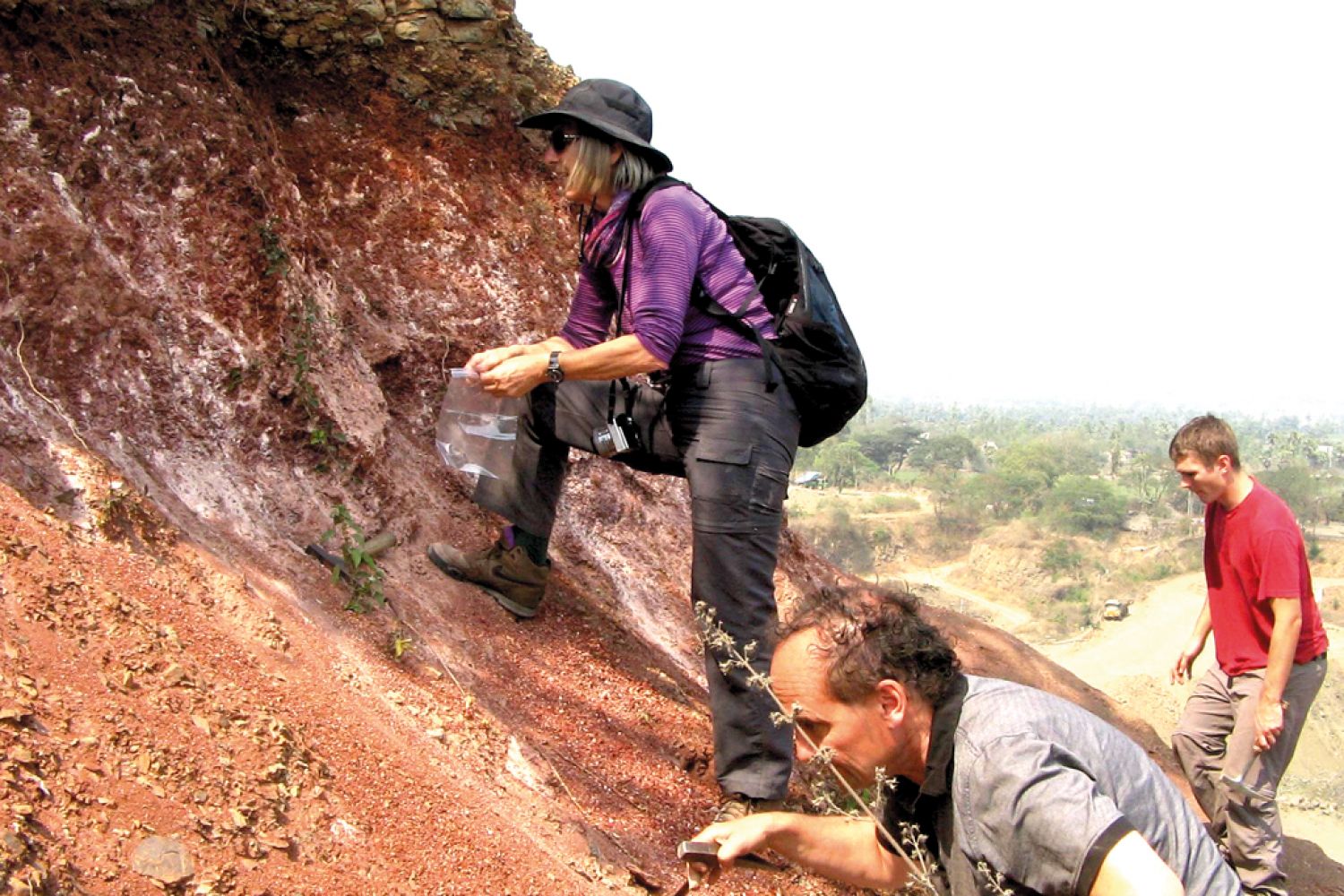
“We’re pretty much
standing on the KTB extinction because of these lava flows,” says Gerta Keller.
She’s talking about the Rajahmundry quarries where she made a field trip
recently. The Cretaceous-Tertiary Boundary (KTB), which Keller invokes while
standing in a big hole gouged out in one of the quarries, was the period when
the majority of species, including non-avian dinosaurs, vanished from the
fossil record.
The scene could be
from Hades but without the searing heat. Summer





